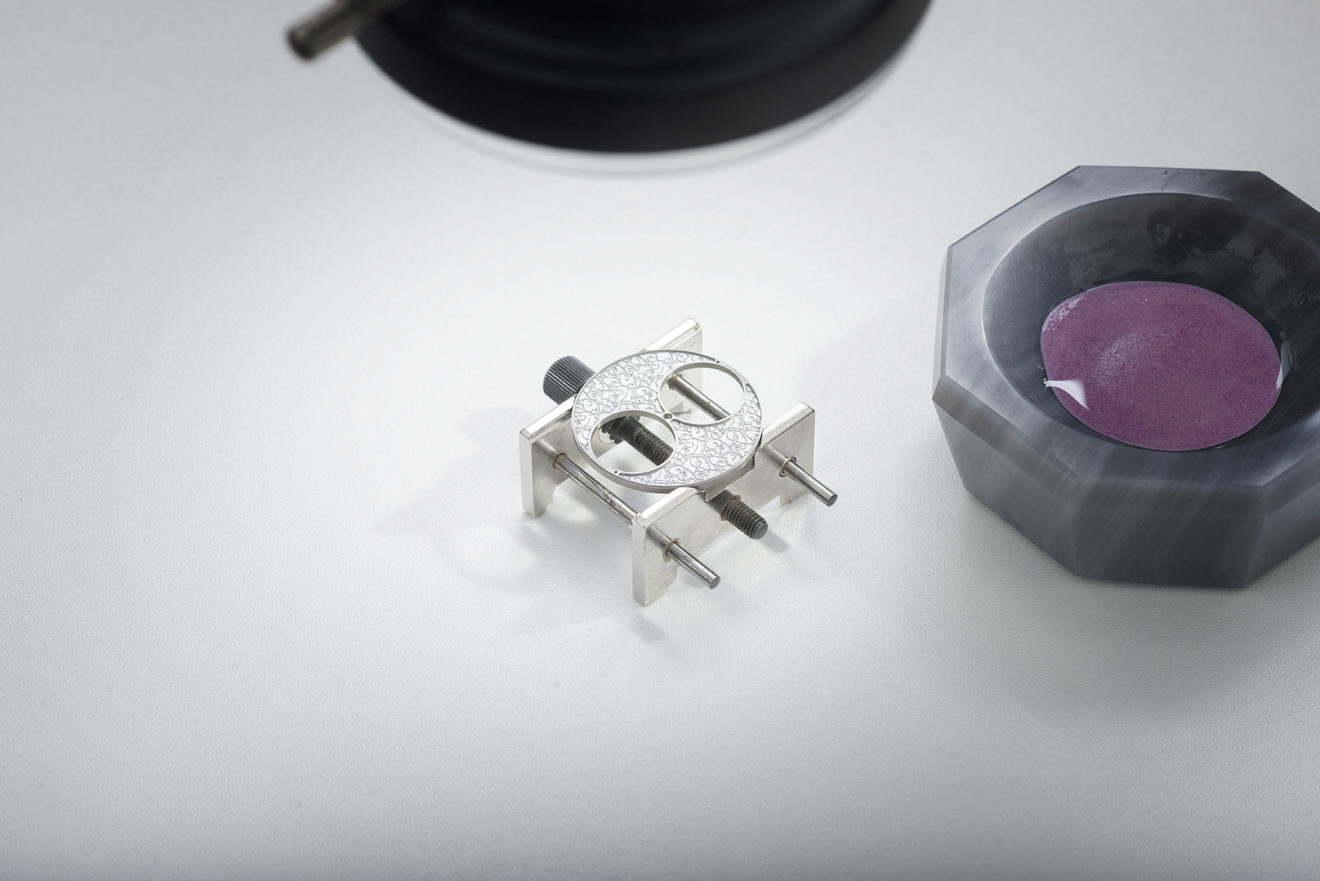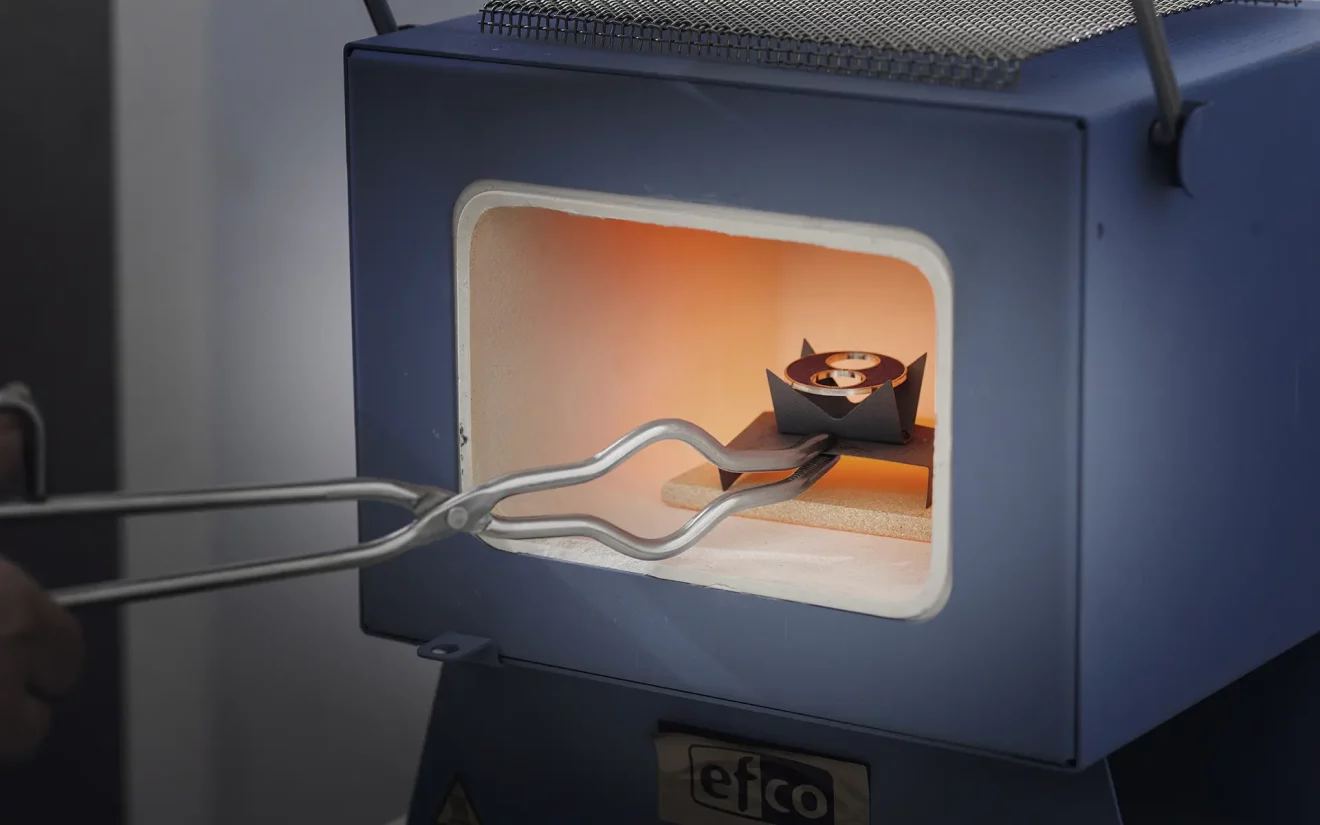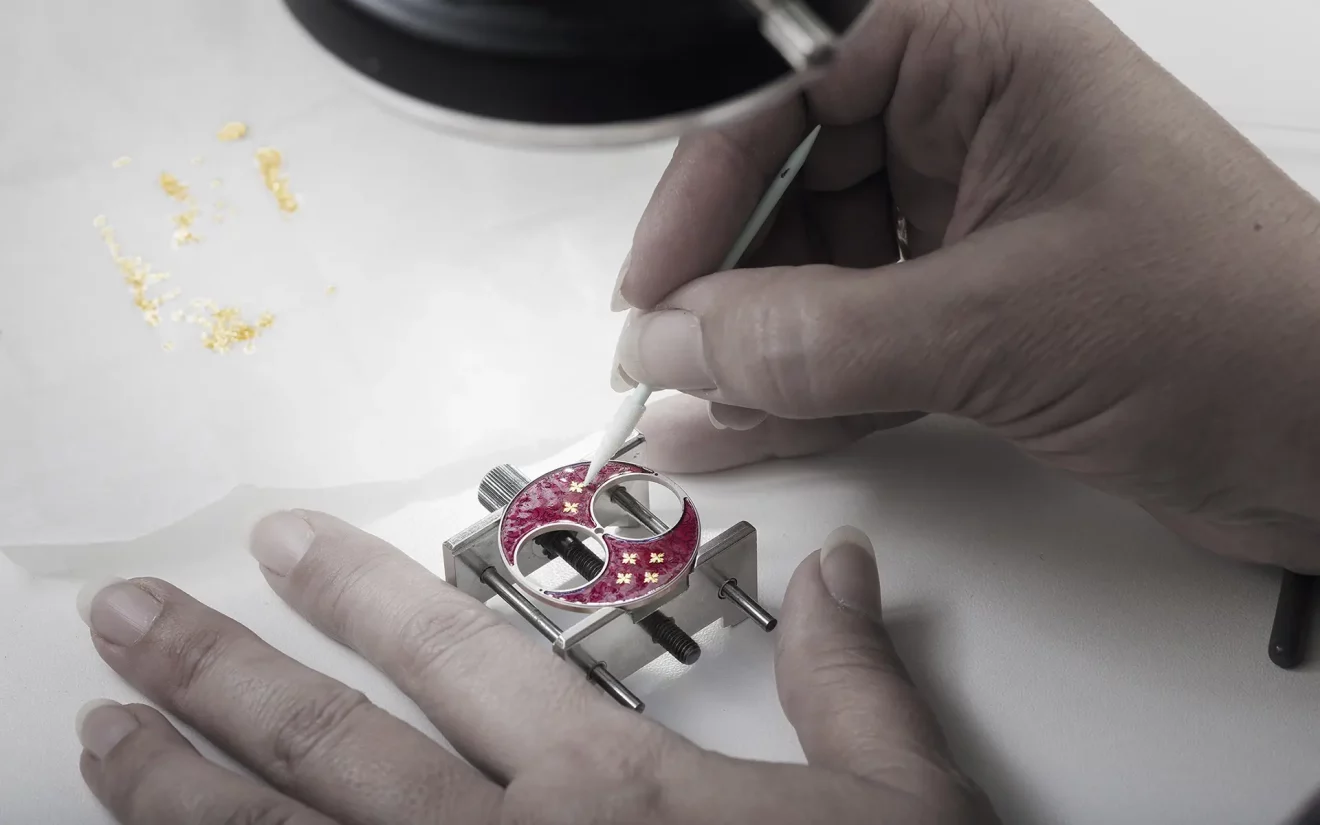Timeless Horological Techniques
Our vision revolves around the creation of timeless timepieces that preserve the classical techniques of watchmaking used over two centuries ago. This is accompanied by a commitment to embracing modern designs while showcasing expert craftsmanship.
We aspire for your timepiece to become an elegant reminder of an ancient tradition, embodying a durability as immutable as time itself.
Each creation we conceive is imbued with this vision, offering a harmonious alliance between
the past and the present.
Thus, your watch becomes much more than a mere timekeeping instrument; it becomes a timeless horological piece, a witness to a rich and eternal history.
Guilloché
The Art of Finishing
Guilloché is a decorative engraving technique that demands exceptional precision and unparalleled artisanal expertise. By engraving intricate and repetitive patterns onto metallic surfaces, often using guilloché lathes or straight-line machines, the artisan creates unique effects of light and texture, transforming each piece into a work of art. The patterns, which can include waves, spirals, or geometric shapes, enhance the depth and beauty of the timepiece, bringing its details to life with every glance.
The Guilloché of our CG SYNC-1863 39.5 GMT Dial
The dial of our CG SYNC-1863 39.5 GMT model is adorned with artisanal guilloché, created using semi-automatic machines from the 1960s. This guilloché, inspired by the “Ancienne Tapisserie Guillochée” style, evokes the intricate patterns of ancient fabrics and tapestries, adding unique depth and texture to the dial.
This traditional method, requiring meticulous mastery and great expertise, pays tribute to the watchmaking art of the past while embracing modern innovations. The guilloché on the CG SYNC-1863 39.5 GMT perfectly embodies the union of heritage and innovation, breathing life into a dial of incomparable elegance. Each engraved motif reflects Charles Girardier’s dedication to preserving ancient craftsmanship, while meeting the expectations of contemporary watch enthusiasts.
Enamelling
The pinnacle of watchmaking craftsmanship!
The delicate art of enamelling, often practiced by prestigious manufactures, represents the pinnacle of watchmaking craftsmanship. This demanding process involves the meticulous fusion of glass powder at extremely high temperatures, a true challenge for artisans. At Charles Girardier, this complex technique is used to adorn our dials, creating pieces with vibrant and enduring designs.
Every step of the process, from the careful preparation of coloured glass powder to the delicate application on a prepared metal surface, requires exceptional expertise and craftsmanship. Repeated firing at high temperatures results in an ultra-resistant surface fused with the metal base.
Enamel artisans, true artists, are also alchemists and visionaries. They anticipate the complex interactions between pigments, ensure colour stability, and envision the final nuances.
Various ancestral techniques, such as cloisonné, champlevé, paillonné, and miniature painting on enamel, are implemented with precision to create pieces of dazzling and timeless beauty. Enamelling thus becomes a dialogue between tradition and innovation, embodying the quintessence of high-end watchmaking craftsmanship.
Enamelling Techniques
The Fine Art of Enamelling reveals itself through five distinct techniques, each employed with precision by the rare enamel artisans who master their subtleties.
In the cloisonné technique, a delicate gold wire, often less than 0.5 mm in diameter, is skilfully bent and curved to draw shapes on a plate previously coated with a thin layer of enamel. After an initial firing, the delineated shapes are filled with various enamels, sometimes requiring multiple trips to the kiln to achieve the desired nuances, transparencies, and depths.
The champlevé method, similar to the previous one, involves depositing enamel in cells, but the plate is pre-carved. This process, sometimes mechanical for simple patterns, becomes a complex manual task for unique pieces. The enameller fills the spaces previously hand-engraved, adding a palette of nuances and colours.
The paillonné technique, on the other hand, showcases tiny leaves of gold or silver cut into intricate patterns, called paillons, integrated into layers of transparent enamel.
Miniature painting on enamel, the rarest, stands out for its unique approach. From the start, the enamel is worked differently, mixed with oil instead of water. Delicately applied with a fine brush on a first layer of enamel, this method allows for the miniature reproduction of pictorial masterpieces, expressive portraits, lively landscapes, or complex scenes.
The camaïeu enamelling technique is a refined artistic method that involves using subtle shades of a single enamel colour to create a monochromatic gradient effect. This delicate approach emphasizes the richness of tones in a single colour, ranging from light to dark, to produce a subtle and nuanced palette.
In this technique, the enamel artist works with a limited palette of colours from the same family, creating visual harmony through a gentle gradation. Each shade is precisely applied to the prepared metal surface, then fired at high temperatures to fuse with the base. This process is repeated several times, allowing the artist to play with variations in tones and create captivating visual effects.
Camaïeu enamelling requires meticulous expertise to achieve a perfect balance between shades and to ensure a smooth transition from one tone to another. The final result is an enamelled work of art of timeless elegance, where mastery of colour and the subtlety of gradation combine to create a unique and refined piece.





